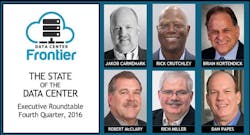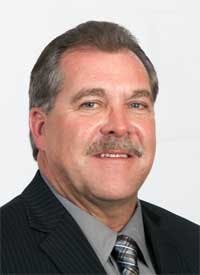Executive Roundtable: Data Center Trends to Watch in 2017
Welcome to our sixth Data Center Executive Roundtable, a quarterly feature showcasing the insights of thought leaders on the state of the data center industry, and where it is headed. In our Fourth Quarter 2016 roundtable, we will examine four topics: Key data center industry trends for 2017, the evolution of enterprise cloud workloads and where they are deployed, trends in the price and availability of renewable energy, and expectations for the modular data center market in 2017.
Here’s a look at our distinguished panel:
- Jakob Carnemark is the Founder and CEO of Aligned Energy, a sustainable technology company with a mission to innovate and optimize infrastructure within data centers to eliminate waste of materials, energy and water, and deliver the data center as a utility to large enterprises and cloud players..
- Robert McClary is Chief Operating Officer for FORTRUST, a premier data center services provider and colocation facility. Robert is responsible for the overall supervision of business operations, high-profile construction and strategic technical direction for FORTRUST.
- Dan Papes is Senior Vice President, Global Sales & Marketing at Digital Realty and oversees sales, leasing and marketing efforts across the organization.
- Rick Crutchley serves as Chief Operating Officer of IO and is responsible for developing, managing and executing the company’s sales & operations strategy.
- Brian Kortendick is the Vice President of Market Development for BASELAYER, a leader in the software-defined data centers and modular data centers.
The conversation is moderated by Rich Miller, the founder and editor of Data Center Frontier. Each day this week we will present a Q&A with these executives on one of our key topics. We begin our discussion by asking our panel to predict the data center stories that will matter in the year ahead.
Data Center Frontier: What will be the key trends that will shape the data center industry in 2017?
Robert McClary, FORTRUST
Robert McClary: One of the first trends will continue to be rack densities increasing as IT environments become more optimized and hardware is refreshed. You’ll see per rack kW increase, as we’ve seen over the past several years.
Second, I think edge computing is going to start pushing the modular approach to data centers. Long story short, we’re going to have a higher volume of data centers, but smaller data centers that are going to be in a distributed model to be able to handle application latency and access to the consumer market. Edge computing is an unfortunate reaction to poor bandwidth infrastructure to the consumer in the US, so we’re going to have to be able to deploy greater numbers of data centers in dispersed locations, which I think is going to accelerate the growth of modular approaches to the design and construction of data centers.
Another continuing trend is the data center end user’s increasing demand for customer-facing DCIM tools to be able to validate SLA (service level agreement) achievements and forecast future demands on their IT environment.[clickToTweet tweet=”Rob McClary of FORTRUST: Edge computing is going to start pushing the modular approach to data centers.” quote=”Rob McClary of FORTRUST: Edge computing is going to start pushing the modular approach to data centers.”]
A fourth trend that I see is for the last several years we’ve been looking at how to get a data center more efficient with respect to PUE or cooling efficiency. I think you’ll also see a push towards better infrastructure components than the traditional static UPS systems, batteries, and switchgear. I think you’re going to see approaches that will conserve real estate or data center footprints. One of those approaches would be modular, but also different types of energy storage and kinetic energy approaches when it comes to UPSs and electrical distribution infrastructure. We’ve been focused probably for the past five to eight years on the mechanical side of the data center. I think you’re going to see an increased focus on efficiencies in the electrical distribution side.
JAKOB CARNEMARK, Aligned Energy
Jakob Carnemark: There are three trends that we are seeing that will continue to be a big focus for our industry in 2017 – cyber security, high-performance compute and IoT (Internet of Things).
- Convergence of Security Layers: Cyber Security needs are moving beyond the traditional firewalls on the network and encryption at endpoints. The cyber wars of today require the convergence of physical infrastructure, networks and software layers enabling dynamic coordination. The increased reliance on mobile devices and increased adoption of IoT require companies to think more holistically about security and focus on end-to-end solutions. This requires next-generation data center infrastructure that can dynamically adapt to changing requirements.
- High-Performance Infrastructure: The debate on where rack densities are going is settled. The answer is all of the above. Infrastructure needs to be able to dynamically adapt to dynamic power and cooling requirements and efficiently move from low density storage to high performance compute rack densities as high as 40kW and beyond.
- Impact of Internet of Things: The IoT space is thriving. Many of the large enterprises we are speaking with have significant IoT initiatives underway. They are really looking for data center infrastructure and cloud infrastructure capable of building a robust and secure IoT platform.
DAN PAPES of Digital Realty
Dan Papes: In 2017, we will see greatly accelerated growth of enterprise hybrid and multi-cloud IT strategies, based on an increase in availability, quality, performance and security of cloud interconnection services and capabilities.
The growing IoT market, as well as the continued search for security advancements and the need for sustainable solutions will also drive growth of interconnection services, creating a strong pull for public cloud and SaaS offerings. Interconnection and colocation vendor consolidation is also likely to continue.
By the end of 2017, Fortune 500 companies without progressive interconnection, hybrid and multi-cloud strategies will be a minority, finding themselves at ever-increasing disadvantages when compared to their competition.
BRIAN KORTENDICK of BASELAYER
Brian Kortendick: We see two trends taking shape in 2017 which will solidify data centers as key parts of the IT value chain. The first is the delivery of critical data center infrastructure to the edge. In a practical sense, this means adding data center capacity to points of a service territory that may otherwise have gone unserved, but hold strategic value for content delivery, aggregation, and distribution. When moving to the edge, end users will require increased transparency and software automation to ensure the infrastructure is reacting at the pace of the underlying applications residing at these locations.
The second trend we see is the wider adoption of modular technologies. For most, the benefits of a “just-in-time” approach were known, if not fully embraced, by the enterprise marketplace. In 2016, we saw numerous third party research reports showing the value of a modular design and deployment approach. For example, Technavio concluded that a modular design can result in a cost savings of 30 percent over a traditional data center build. As it relates to service providers (Webscale or colocation) we anticipate that their need to manage variations in power, space, and density will result in embracing modular thereby leveraging the automation and software control that most standardized modular designs offer.
RICK CRUTCHLEY of IO.
Rick Crutchley: The key trends that I believe will shape the data center industry in the coming years are going to be the continued growth in Big Data and the Internet of Things, more adoption of public cloud by enterprises driving complexity for IT departments, and hybrid cloud where enterprises balance workloads across private and public cloud.
Analytics are also going to play a big role as enterprises are currently leaning on their IT departments for an analysis on data in order to understand consumer buying trends.
NEXT: Our Executive Roundtable panel looks at trends in enterprise cloud deployments.
Keep pace with the fact-moving world of data centers and cloud computing by following us on Twitter and Facebook, connecting with me on LinkedIn, and signing up for our weekly newspaper using the form below:
About the Author





